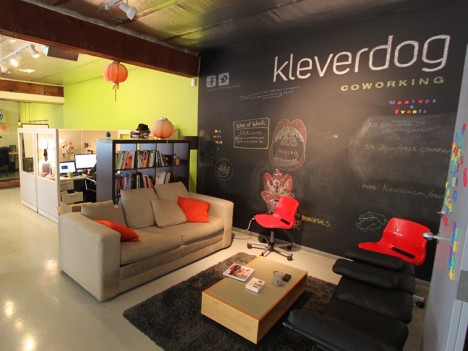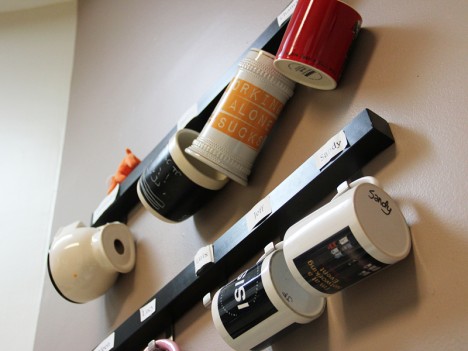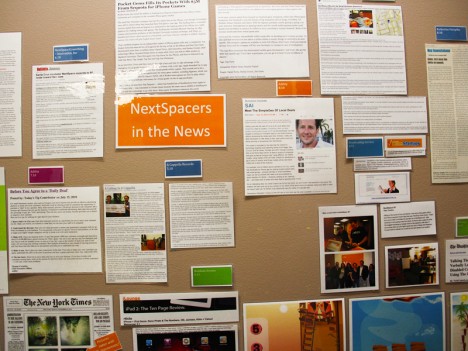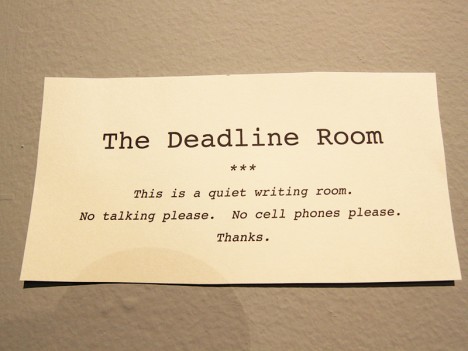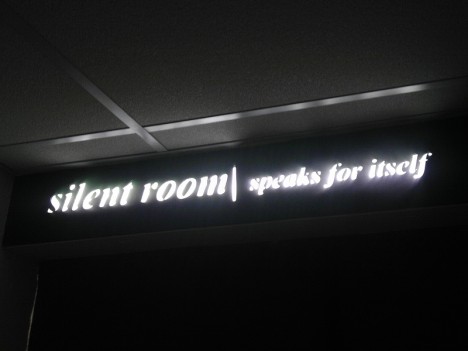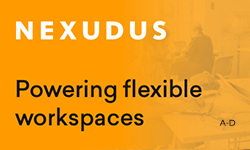Late to work on Monday, home early on Friday - such is the work week for most. Coworkers are no exception, especially in regards to visiting their coworking space. Because freelancers require more self-discipline and are rarely required to show their face in the (un)office, coworking spaces are more often orphaned towards the beginning and the end of the week. This results in an influx of members midweek, and unevenly loaded desks.
More events on underutilized days
There are a number of solutions coworking spaces have come up with to solve this problem. One such solution is to host strategically planned events. Coworkers at Creative Density, for example, are invited to join in a weekly Friday afternoon fridge-clean-out, during which they drink the week's leftover beer. The same can also frequently be done for edible leftovers, and is a good way to clean out the fridge, a mundane task needs to be done anyway.
Other events include Free Coworking Mondays once a month, as is planned at IndieDesk in Los Angeles. This provides an opportunity for interested users to get to know the space, and an incentive for members to use the space at the beginning of the week, with the promise of meeting new and interesting people.
Instead of making your members feel like they must attend an event, try instead to organize casual meetups. Casual invitations in conversations, a notice on the wall in the event space or a status update on social media pages are often enough to generate interest and a crowd. Also avoid hosting regular events which disturb members at work, which could lead to a permanent lull in weekly attendance.
The kitchen as a transparent, but noise-reduced, center
If members could have more of a say in any area of their workspace, most coworkers would begin with the “kitchen and food” areas. Although what things in particular members would like to change, and there could indeed be a few, no-one likes a dirty kitchen, and this may be a qualm for a number of coworking space members everywhere. And we suspect this may have a fair amount to do with a dirty kitchen.
We have found that the best place for a kitchen in a coworking space is in the center or towards the front of the building, in full visibility. Because everyone then has a clear view of the cooking area, and those hovering about inside it, members are slightly more inclined to place their dirty mug or plate into the dishwasher, rather than leaving it on the counter.
Having a kitchen in the middle or towards the front of a space however can be noisy; and certainly, the kitchen is a perfect place to engage in small talk, or to get to know that coworker who works on the opposite side of the room. For this reason, creating transparent separation or dividers - for example, glass panes or large windows - between the workspace and the eating area is a good idea. A central kitchen also serves as a space divider in itself, helping to break up a large room into different areas.
Granted, not all spaces will have the flexibility, space, or resources to place a kitchen wherever they choose. NextSpace in San Francisco has come up with a simple and charming middle ground to encourage coworkers to wash up. Each member has their own mug labelled with their name, so the dish culprit is always known. It also helps create a sense of belonging amongst the members, and can equally help avoid that awkward moment when you’ve forgotten someone’s name.
Quiet strengthen
Many members become quickly distracted by high volume. In most cases, this rarely leads to them leaving, but it can nonetheless help members feel more productive by creating quiet areas or silent rooms, if the space permits.
Since writers in particular require silent workspaces, they are most often found in coworking spaces that cater especially for them, like Writer's Junction in Santa Monica, for example, and this usually refers to the noise level of the workplace.
In the Writer’s Junction, the communicative spaces are located in the center of the coworking spaces. In addition, unlike many coworking spaces, they offer their members a few private rooms. The most part is still dedicated to common areas, though, but it allows members to choose a noise level. There is also a ‘Deadline Room’, whose name sends out a particularly clear message.
Berlin’s betahaus, with its 200 desks, are afforded even more space options, and thus have a sizeable ‘silent room’, converted from a normal volume room at the request of members. With the new rule, the area is even quieter than expected, and interestingly, there is also a lower demand for silent desks than predicted, suggesting that a quiet area need not be overly large. In the end, this area was partly rearranged by constructing several private offices with windows, surrounded by an open workspace. On average, the space would rarely need to house in excess of more than one sixth of all members.
An alternative to silent areas are white noise machines, which regulate the volume in a room with varying pitches. This creates an overall sense of a quieter environment.
Avoid theft
The social control in coworking spaces - and surprisingly even in large spaces - is very good, especially compared to libraries or cafés. Coworking spaces are among the safest workplaces in the world and are almost always without video surveillance or security personnel. But nonetheless, it always pays to be safe, particularly for larger spaces with more members and, therefore, more anonymity. The majority of members will still leave laptops or mobile phones unattended, and especially in the evenings when less members are present, there is an increased risk of theft.
Coworking spaces avert this risk in various ways. In almost all cases, only permanent members are given keys and 24-hour access. In Indyhall in Philadelphia, keys are only given to members who have been there for one month, and whose trustworthiness has been vouched for by another member. Other less-formal measures are taken elsewhere, like in co.up in Berlin, which enforces a policy that requires all other members to leave when the last permanent member in the space goes home in the evening.
Other spaces separate fixed and flexible work areas, so that less valuable items are scattered around the open areas. Some also provide lockers or lockable cabinets. Or, alternately, some simply close the space at a fixed time and give up 24-hour access.
The latter may limit the flexibility of some members, but, on the other hand, some members appreciate a fixed closing time, affording them a clearer-cut working day and a healthier work-life balance. Certainly, all methods have their advantages and disadvantages. Administering a key is also a is trust-forming activity, that promotes autonomous social control.
Members Wall
Photos and names of members, either on a physical wall in the coworking space or on the intranet will help establish and maintain a community, especially as membership numbers increase. A member’s wall is now a standard feature of most coworking spaces for this reason.
Remind members too of the benefits of including extra information, like their profession. Looking for a graphic designer? The member wall enables quick orientation... if a short job profile is included. Betahaus’ member wall comprises simply of a business card in a postcard-sized backing, which can be flipped to indicate whether they are present or, more exactly, ‘in da haus’.
Share your successes with other members
Next to the enormous member wall in NextSpace hangs a newspaper clipping board, where members can pin up articles and publicity about themselves or their projects. It helps members learn more about one another, and encourages a strong and supportive communtiy.
Fast and reliable internet
We are perhaps stating the obvious, but nothing is more important than WiFi to a coworking space. If the Internet connection, modem or wireless router momentarily drops, this might encourage a burst of interaction inside a facility. If it happens too often, members will take theri complaints elsewhere.
Carefully consider the available internet plans, because not all network providers, modems and routers always keep their promises. Assure also that you have a permanent, and functioning, alternative, from two seperate providers who do not use the same lines. In addition, keep a spare router on hand for fast replacement. As you grow your community, the number of connections, networks and routers should be increased accordingly.
Having several networks too allows more control over internet access. For permanent members, a more secure connection can be offered. For guests and infrequent users, a slightly more open connection, with an easy-to-find password, is sufficient and convenient. Moreover, the extra guest network serves as a backup for everyone.
Most coworkers however have overly high expectations, or expect the fastest, most expensive option on the market. This said, it has been seen that the faster the connection, the longer a coworker stays in a space. He who skimps and saves on an internet connection is not doing himself a favour.
Lastly, when comparing offers from different providers, do not only consider the download speed. Coworkers send endless emails, large files and develop websites, so high upload speeds are equally important.
:::
Related articles:
Designing imperfect coworking spaces
Good idea! Some toys & tools for coworking spaces
Ten tips to make your coworking space more profitable






